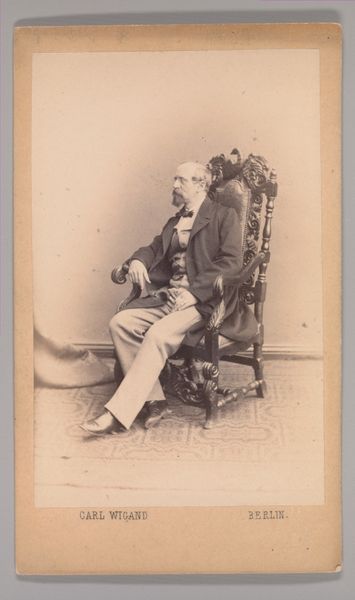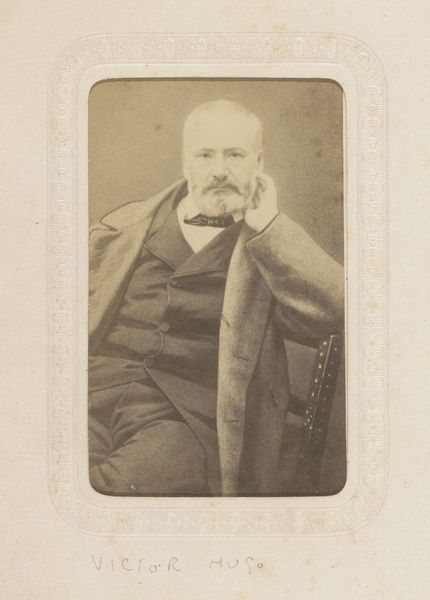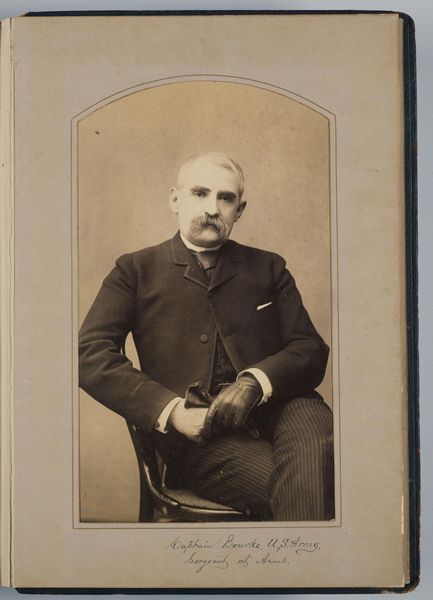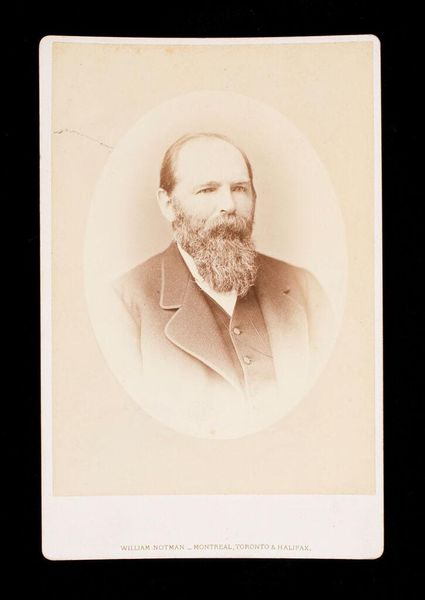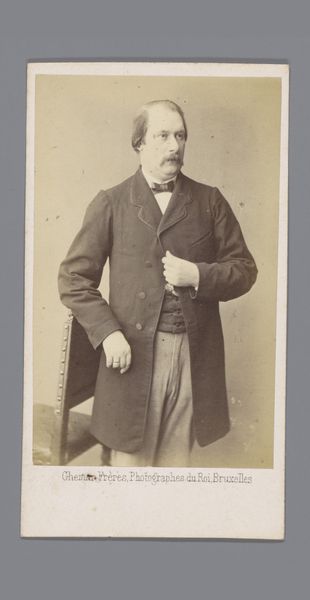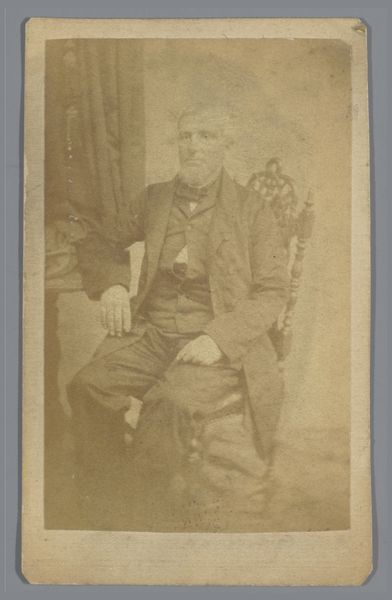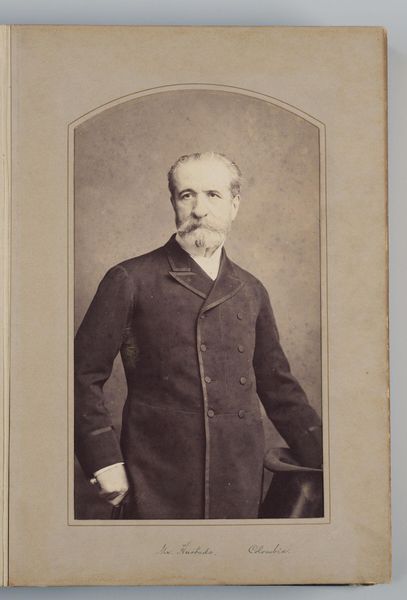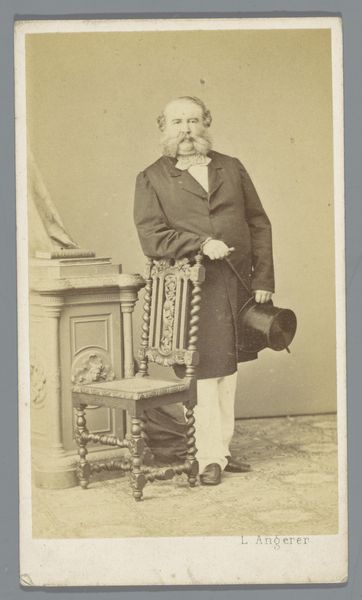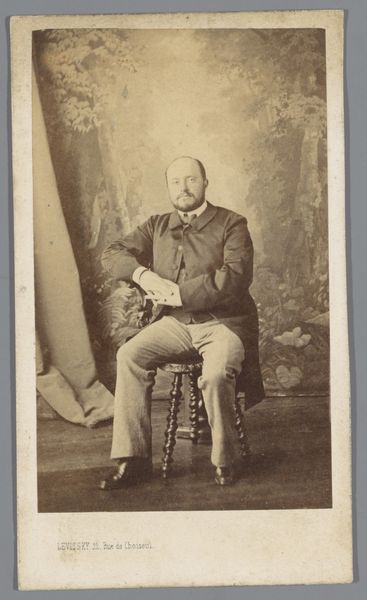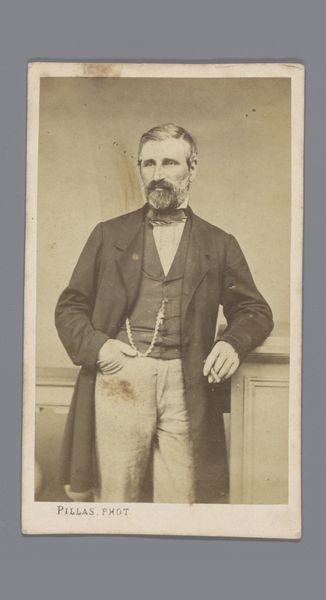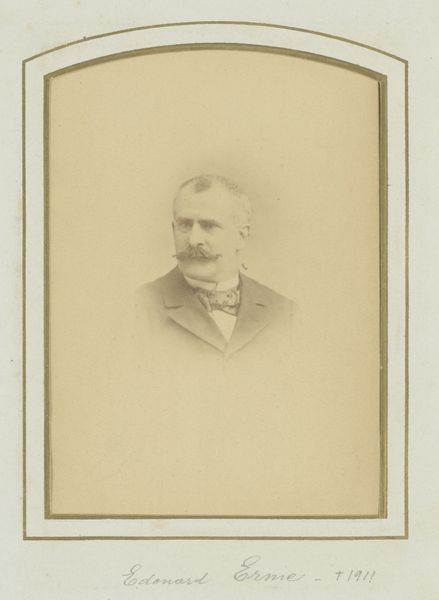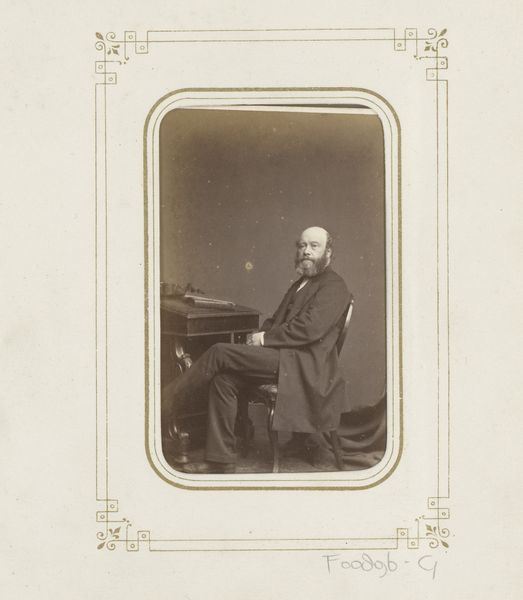
Portret van een onbekende man, zittend aan tafel met een boek in zijn handen 1855 - 1880
0:00
0:00
daguerreotype, photography
#
portrait
#
book
#
daguerreotype
#
photography
#
genre-painting
#
realism
Dimensions: height 101 mm, width 58 mm
Copyright: Rijks Museum: Open Domain
Curator: This daguerreotype, "Portrait of an Unknown Man Sitting at a Table with a Book in his Hands," was taken sometime between 1855 and 1880 by Bisson Frères. Editor: It's captivating. The light seems to emanate from the figure and the open book, leaving everything else soft. A tableau of serenity and intelligence. Curator: Indeed, Bisson Frères masterfully captured light. Daguerreotypes, unlike later photographic prints, have an incredible, almost mirror-like surface. The detail in his face, his hands is astonishing. Editor: One sees a person who matters. But beyond portraiture, this embodies much more than an image. There's an assertive declaration of bourgeois sensibility present through clothing and setting. It conveys education, a man deeply within the process of civilization and literature. The props create meaning as much as the central figure. Curator: That is partly the power and, if we consider that we don't know exactly who he is, his lack of specificity and the common tools within the photographic tableau create a generic "portrait of education." Even so, the drape and patterned tablecloth add textural complexity, preventing the whole scene from becoming too sterile. And that almost theatrical composition of forms—table, book, drape—lends symbolic depth. The textures against the tones are rich and give dimension to his solemn yet approachable presence. Editor: So this would've been an aspirational object? It suggests more than individual success; there are societal meanings beyond simple representation? Curator: The figure embodies stability and perhaps suggests something of upward mobility. Even though we do not know exactly who he is, as you state, he seems symbolic of broader movements that would define the era: science, industry, colonial governance, and literature. Editor: The photographic work achieves an interesting effect by suggesting the values to be acquired and displayed through the simple gesture of representing the ideal person. These social scripts of imagery give so much context to a silent narrative that photography as document can easily capture and easily disseminate. Thank you! Curator: A thought-provoking analysis! Thank you too.
Comments
No comments
Be the first to comment and join the conversation on the ultimate creative platform.

